Jumping into the ring with Nintendo Switch's Arms reveals a surprisingly complex fighting game
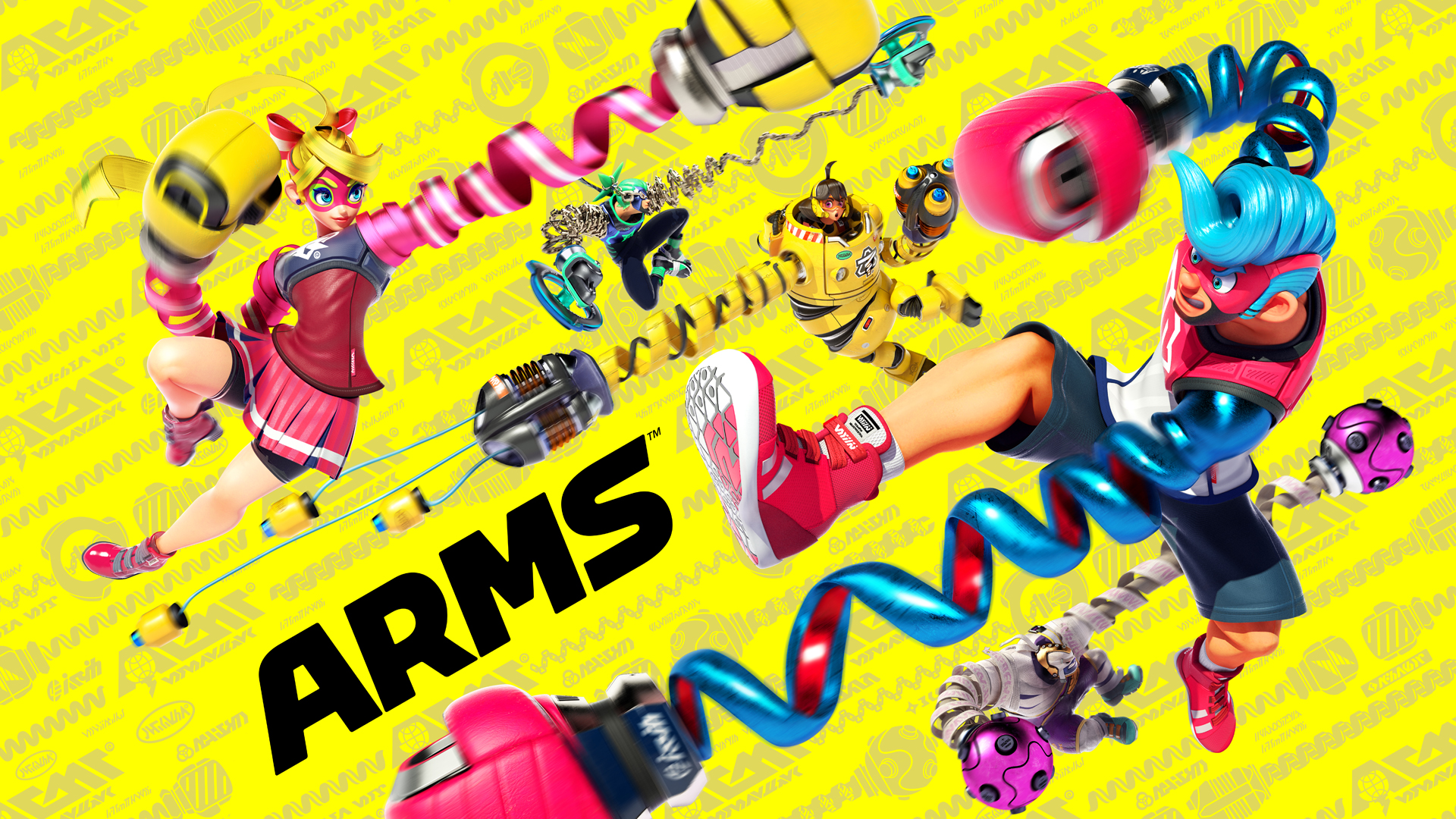
Arms is to fighting games as Splatoon is to shooters: an endearing gamble from Nintendo that flies in the face of genre conventions. This upcoming Nintendo Switch game is founded on two of the least popular frameworks in the fighting game scene: a third-person, behind-the-back camera, and a system built with motion controls in mind. The former has never gained much traction in the West (as evidenced by the obscurity of Anarchy Reigns and the cancellation of Rise of Incarnates), and the latter evokes the lambasted Kinect flop Fighter Within, or the frenzied fist-flinging of Wii Boxing that's basically the motion-control equivalent of button mashing. But if anyone can pull off this unorthodox combo successfully, it's Nintendo - even if Arms seems like it'll exist in the hazy gulf between accessible and hardcore fighting games.
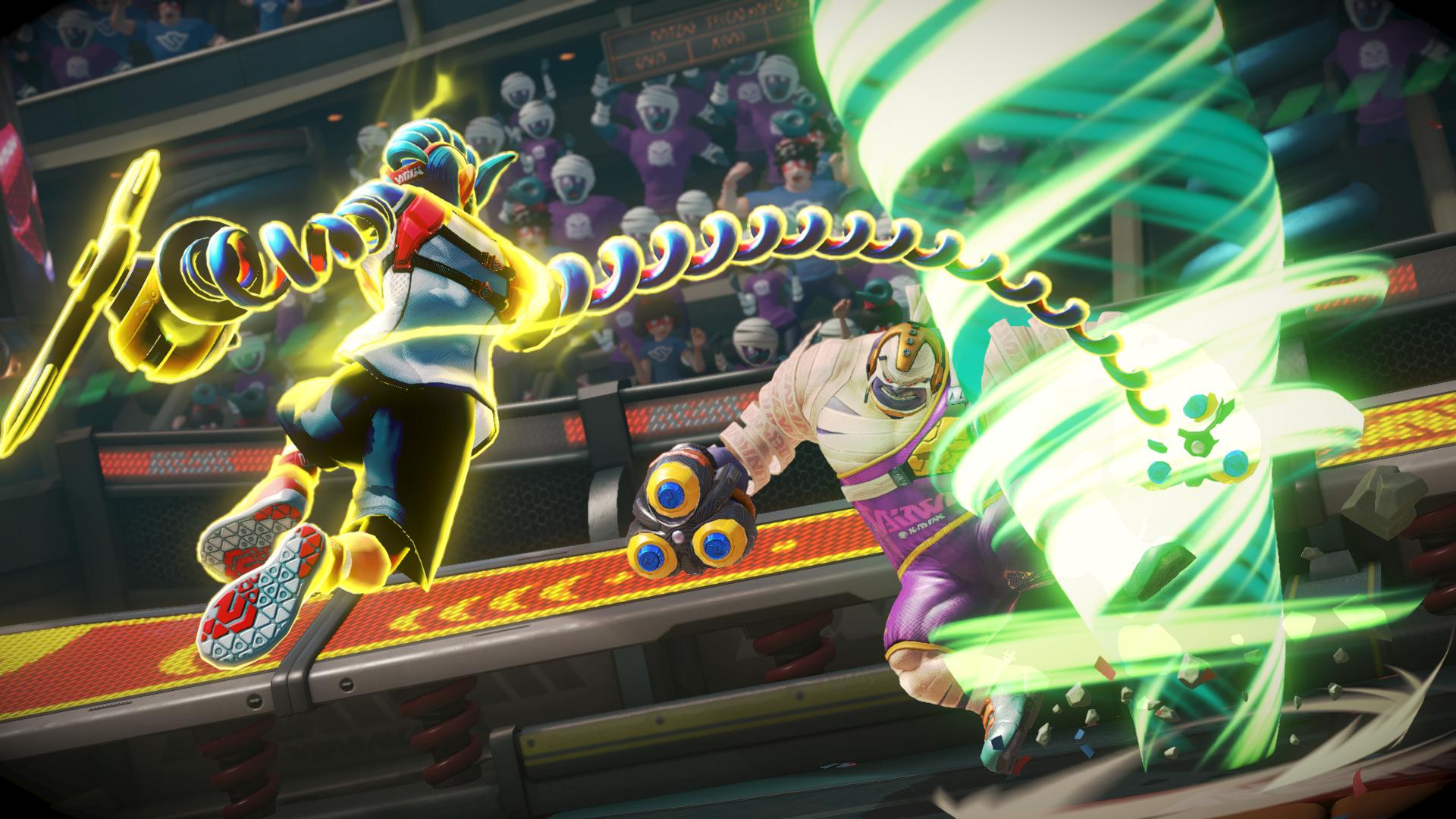
Fortunately, Arms' biggest draw hits you right in the face: its spectacular presentation, on par with the likes of Splatoon and Mario Kart 8 Deluxe. Arms' vibrant colors, gorgeous character models, and slick animations really pop, and the soundtrack is packed with catchy rhythms that give the brawls a peppy, lighthearted vibe. The roster of 10 stretchy-limbed fighters is full of lovably goofy charm, including the final three character reveals: the lanky Kid Cobra, French diva Twintelle (who actually has normal-looking arms and flings punches with her super-long hair), and the metallic duo of cop-bot Byte paired with his robo-dog Barq. Every fighter's design is appealing, making you want to jump right into a fight and start swinging your extendo-haymakers wildly.
This fighting game delivers lots of depth
Character choice is just the beginning. For starters, every fighter can bring three types of Arms into a fight, which range from basic giant boxing gloves and semi-homing missile barrages, to boomerangs that curve around the usual point of impact and bizarre masks that move achingly slow but block incoming punches. Every Arm type (which fall into light, medium or heavy categories and can have one of seven elemental effects) can be used by any fighter, though you'll have to unlock some by purchasing them with in-game currency earned by winning matches. Being able to mix and match these three at the start of each round on a per-arm basis adds another layer of variables, and equipping two of the same Arm type isn't advisable because it limits your options. Wait, we're not done yet: once you've chosen all that, your stage selection (every character has their own unique turf) also makes a huge difference. Some stages are tiny and force conflict, while others are so spacious that it's hard to tell how far your Arms will reach. Some even have gimmicks like punch-obstructing pillars you can hide behind, or floating platforms you can hop onto for maximized mobility.
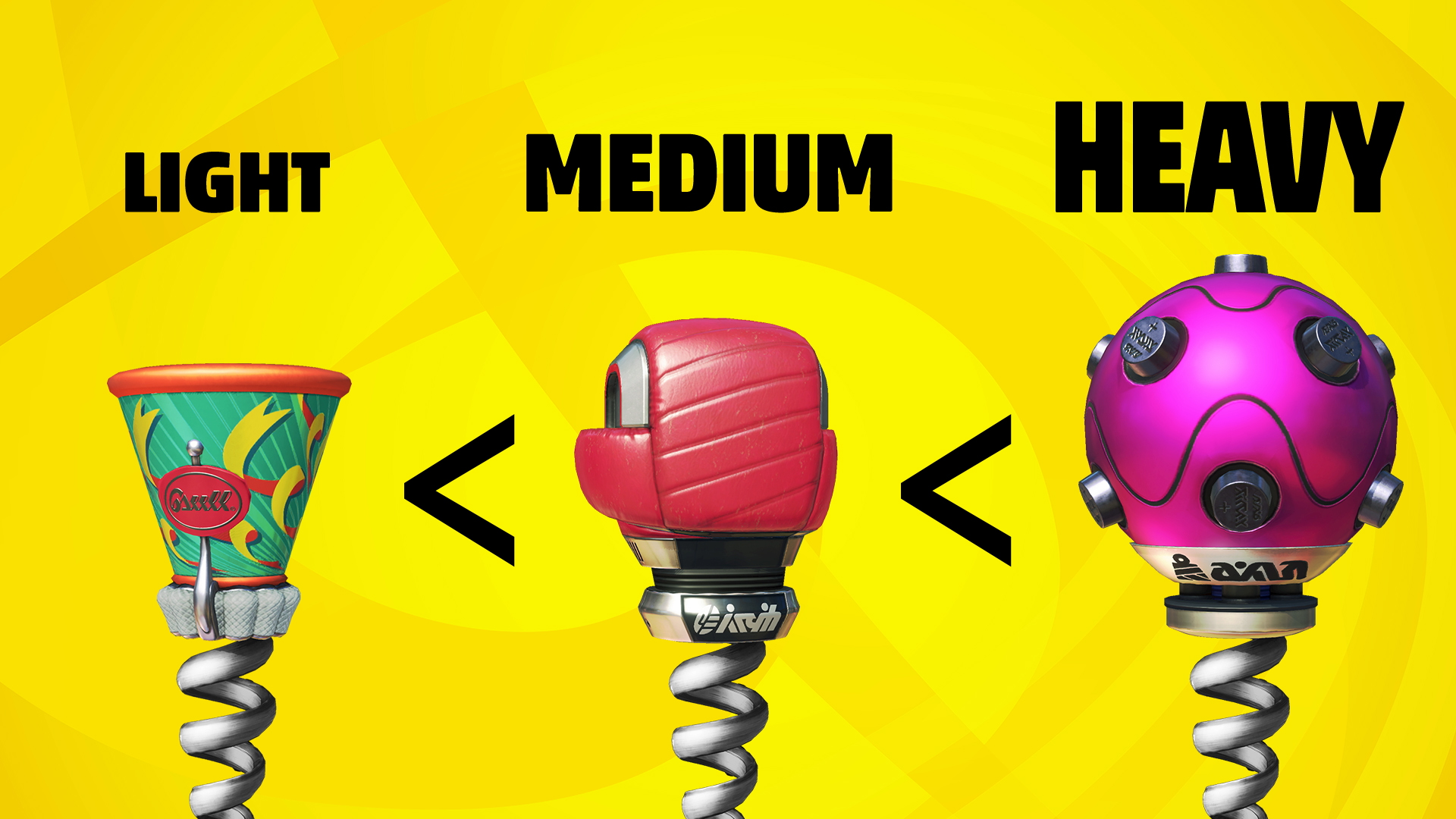
Depth is a huge part of what makes fighting games so rewarding for those who take the time to learn them, and Arms has plenty to spare - but it can be a lot to take in for someone who wants to casually hop into a match and start punching. Atop the Arms and stage selections, each character has a distinct trait that can be difficult to visually understand at the onset: Twintelle can slow down time after a successful dodge, Master Mummy slowly regenerates health while blocking, Byte's cybernetic animal companion Barq will occasionally throw punches autonomously, and so forth. There's also meant to a be a rock-paper-scissors rotation of punches, throws, and blocking/dodging, but it feels like a constant fisticuffs offense is always the strongest option: throws get stuffed by a punch, turtling on defense doesn't accomplish much, and frequent attacks build up your rapid-fire-punching super meter in a hurry.
Coming to grips with the Joy-Con motion controls
All that complexity sounds like the makings of a hardcore fighting game ripe for high-level competition and the pursuit of mastery... if only Arms motion controls weren't getting in the way. After a few hours of hands-on play, I still didn't feel felt truly comfortable with Arms' Joy-Con-powered punching. The primary way to play is by holding a Joy-Con in each hand, with the analog sticks and face buttons facing inward; you use your thumbs to press L (dodge) and R (jump), tilt your Joy-Con inward to block, and punch forward to attack (with the ability to curve the trajectory of your fist as it flies). The problem is that you also tilt your Joy-Con to move your character around, which you need to be doing constantly if you want to dodge a barrage of blows. The punching motion doesn't feel natural, either: the most effective way to play is to keep your arms close and your fists locked in a relatively vertical position like you're impersonating a Rock'em Sock'em Robot, rather than fully extending your arm or putting your dukes up near your head in an intuitive way.
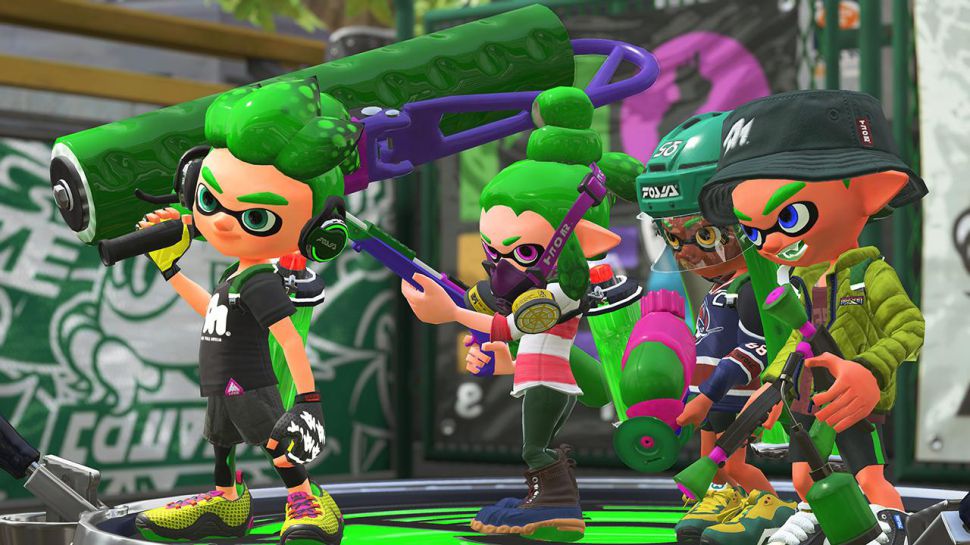
Wondering what other competitive games like Arms are coming to Nintendo Switch? Check out our list of all the upcoming Nintendo Switch games for 2017, including Splatoon 2 (pictured above)!
That brings me to my main beef with Arms: whether you're moving or attacking, there's no well-defined 'neutral' position to rest in and get your bearings. Whether you're playing on a pad or a fightstick, a joystick or D-pad will always rest in a neutral position if you let go of the controller, and your fighter will stand still as a result. By contrast, trying to stay put and take stock of your positioning in Arms is a constant struggle. You may be so caught up in the excitement of a match, you might not even realize you're subconsciously tilting the controllers, causing your character to subtly but continuously drift left or right. The third-person camera and relatively sluggish movement speeds of all the fighters make it extremely difficult to tell if you're sitting within punching range for you or your opponent, and tilting your fists to lurch forward or backward feels achingly slow. Your Arms don't function like regular punches, either: they keep extending and retracting long after your real-life arm has shot out and snapped back into place, so you need to pay attention to in-game animations that don't line up with your actual movements. There's an inherent disconnect to playing a motion-controlled fighting game where quick jabs in reality have the in-game responsiveness of a slow-mo yo-yo.
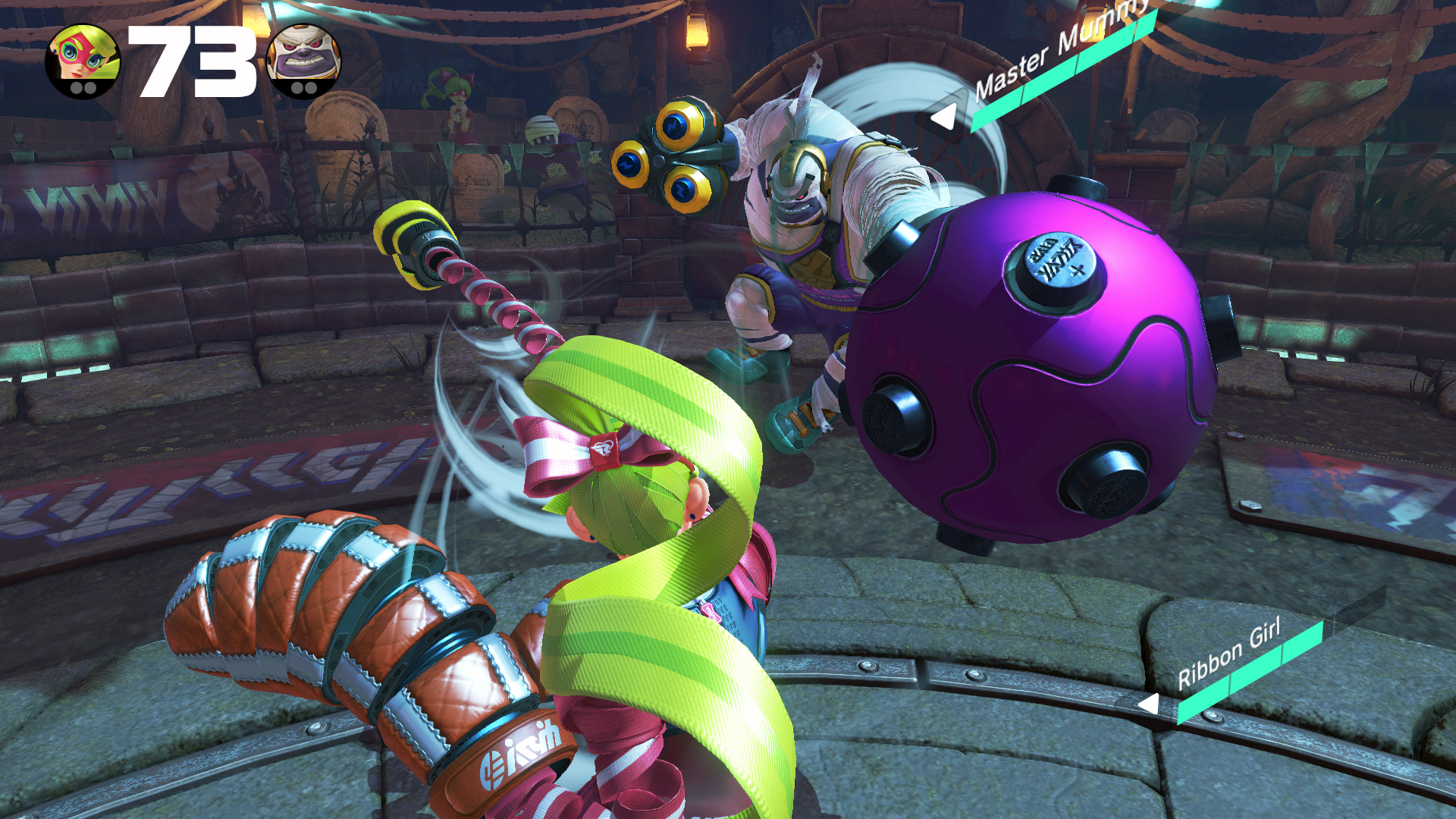
Time will tell if, with enough practice, players can get over their natural instincts to control Arms in the most efficient way possible. Playing Arms on a controller will be an option, which wasn't available during this demo - but it seems like a less effective way to play, as it sounds like you won't be able to affect your fists' trajectory and curve shots toward evasive opponents. Instead of learning extensive combo strings or the tight timing of links, pro Arms players may have to become masters of their real-life movements, like trained pilots holding twin joysticks that aren't actually attached to anything. From a spectator perspective, that could be equal parts entertaining and bizarre - and spectating Arms is a hoot, thanks to its clean and concise UI that clearly displays life and super bars (though the floating damage numbers accompanying each hit can be a bit confusing).
Sign up to the GamesRadar+ Newsletter
Weekly digests, tales from the communities you love, and more
Take a break from regular bouts with extra modes
If you need a chance of pace from the fight-til-someone's-KOed base game, Arms also offers simple but fun modes that make for nice distractions. Skillshot is a straightforward minigame: fighters stand on opposite ends of a shooting gallery, only able to move left or right (which, let me tell you, feels really refreshing and responsive if you've been agonizing over the usual controls). Circular targets pop up in the middle of the playfield; punching them in succession (and possibly ending your punch with a shot to the opponent's chin) scores points, which is amusing for a handful of quick rounds before growing stale.
Hoops, on the other hand, is a god-dang delight: fights take place on a basketball half-court, and your opponent's body acts the ball in a fast first-to-10. Connecting with a throw near the hoop triggers an amazing animation where you leap up to the rim and literally dunk your adversary, while throwing from outside the paint has a chance to miss (or result in a supremely satisfying swish). You can also simply wallop your enemy into the springy walls surrounding the court, which can bounce them back into the net, even from behind the backboard. When your friends come over eager to check out Arms, Hoops is the mode you'll want to show them; I dare say I had more fun with its ridiculous NBA Jam-esque brawling than the standard duels.
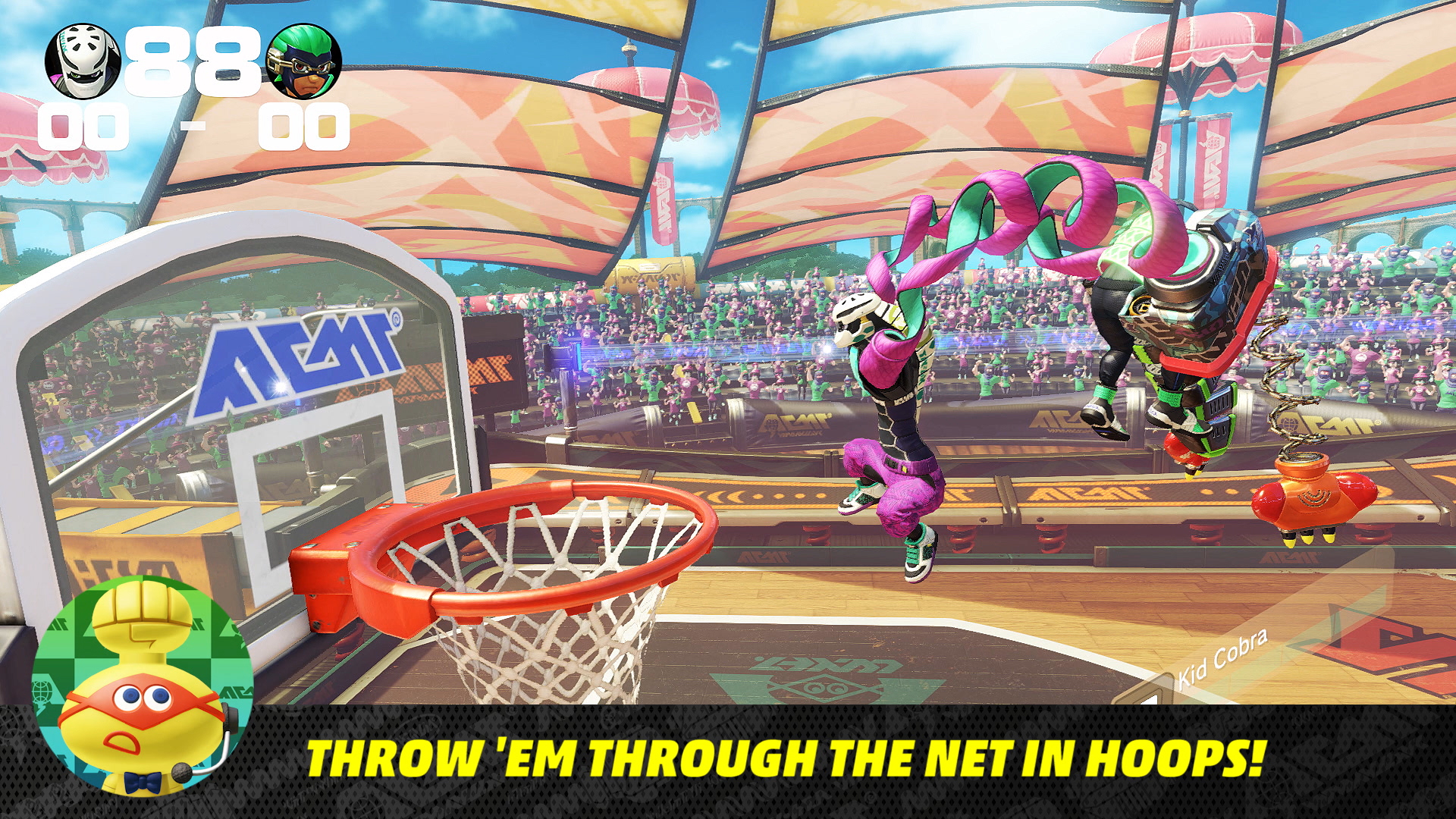
Playing with friends can get even more hectic if you've got the controllers to accommodate Arms' 2v2 mode, which is almost too chaotic for its own good. Fists are flying every which way, and the fighters on each team are linked by a string that makes throws upend both allied players. That makes for some satisfying denials, like when you throw one opponent to shut down their teammate's super attack. But it's frustrating to get caught on the other end of such a power play, your control suddenly getting whipped away from you without warning because your teammate got caught. Still, 2v2 battles could offer an anarchic, low-stakes reprieve from the one-on-one matches and give more people a chance to join in the fight.
In lieu of a new (or ported) Smash Bros. for Switch, Arms is in an interesting position as Nintendo's premier new-gen fighter that plays quite unlike its competitors. But it still has to prove itself as a worthy bout for more casual fighting fans who may not want to deal with the hassle of layered complexity, or dedicated players who will bristle at the finicky controls in a genre that reveres precision and responsiveness. You'll be able to find out if Arms' funky boxing clicks with you during the Global Testpunch demo events in the coming weeks, or when Arms launches for Nintendo Switch on June 16, 2017.
Lucas Sullivan is the former US Managing Editor of GamesRadar+. Lucas spent seven years working for GR, starting as an Associate Editor in 2012 before climbing the ranks. He left us in 2019 to pursue a career path on the other side of the fence, joining 2K Games as a Global Content Manager. Lucas doesn't get to write about games like Borderlands and Mafia anymore, but he does get to help make and market them.



